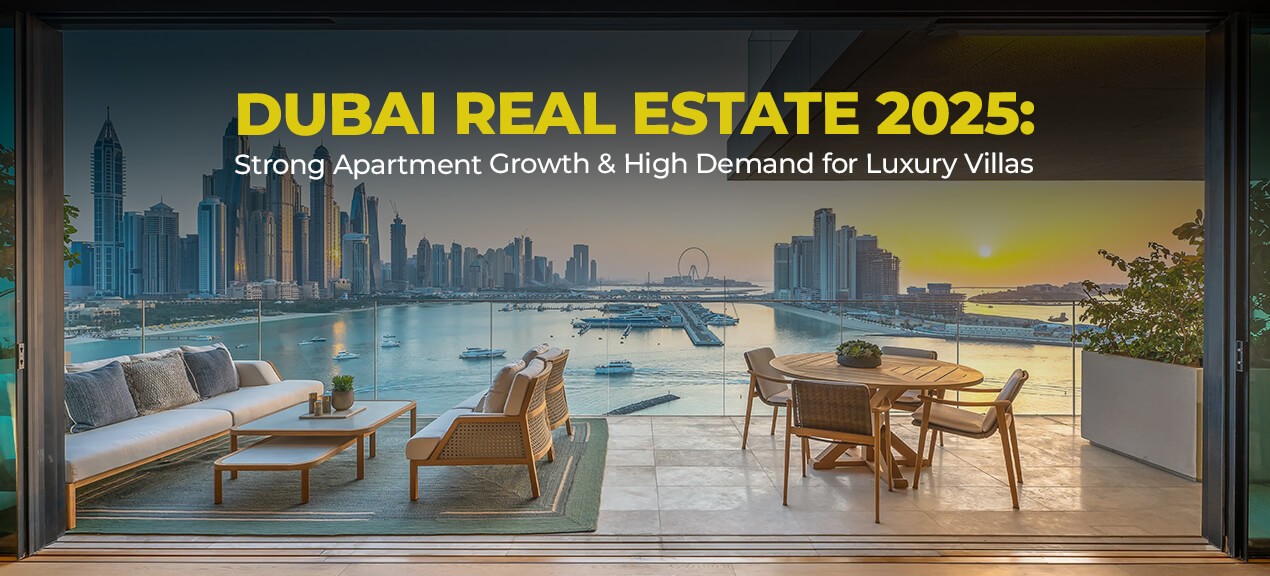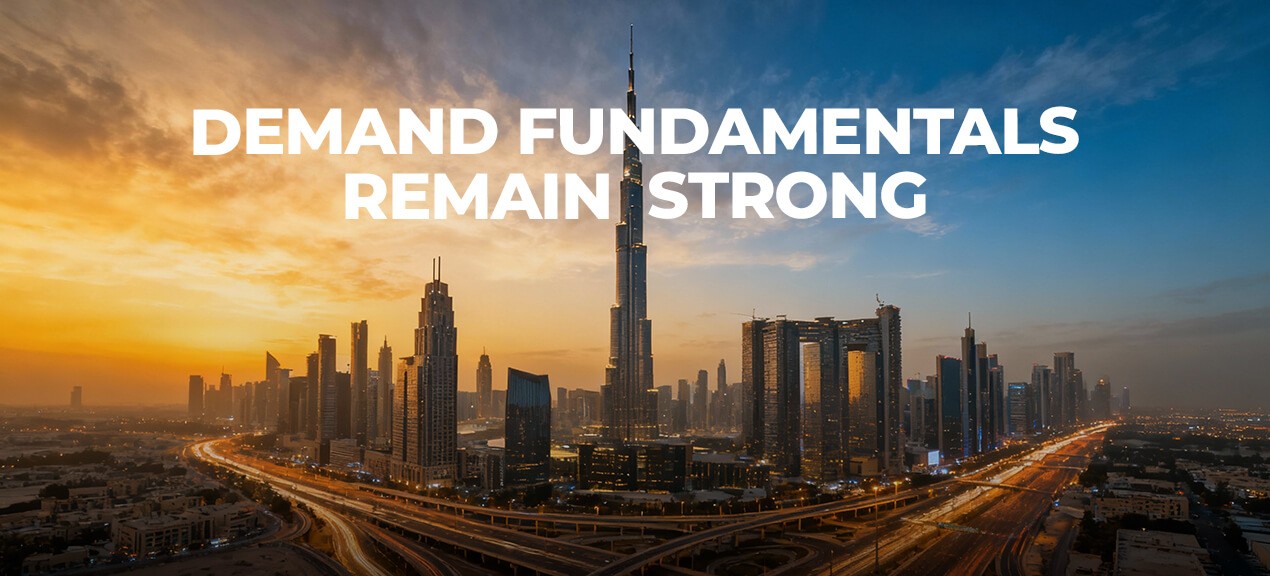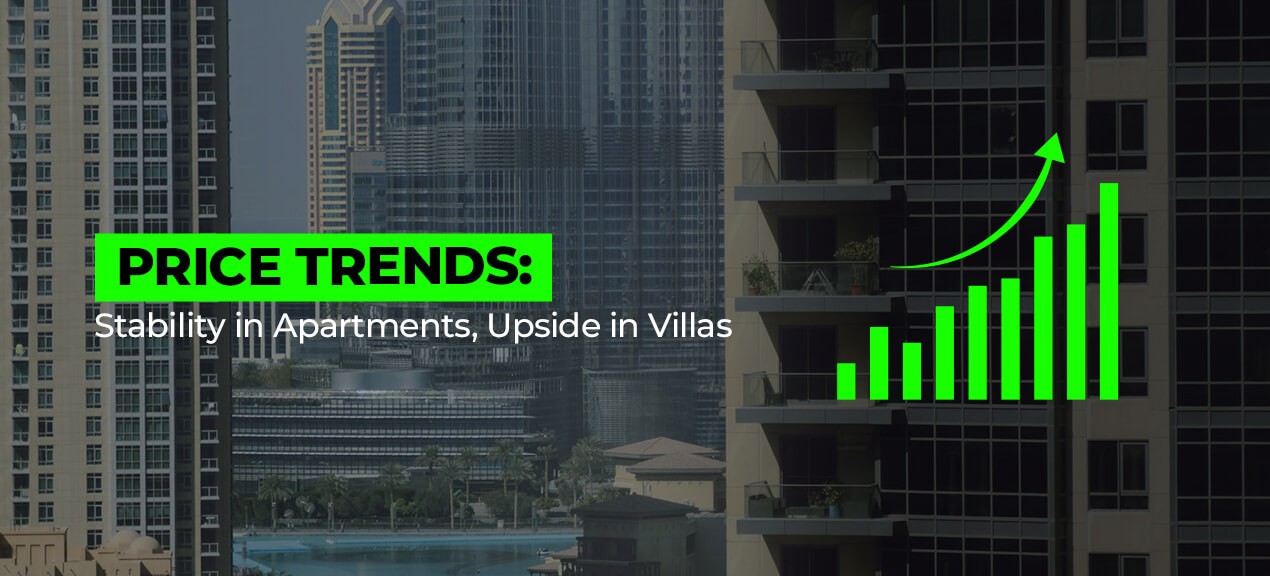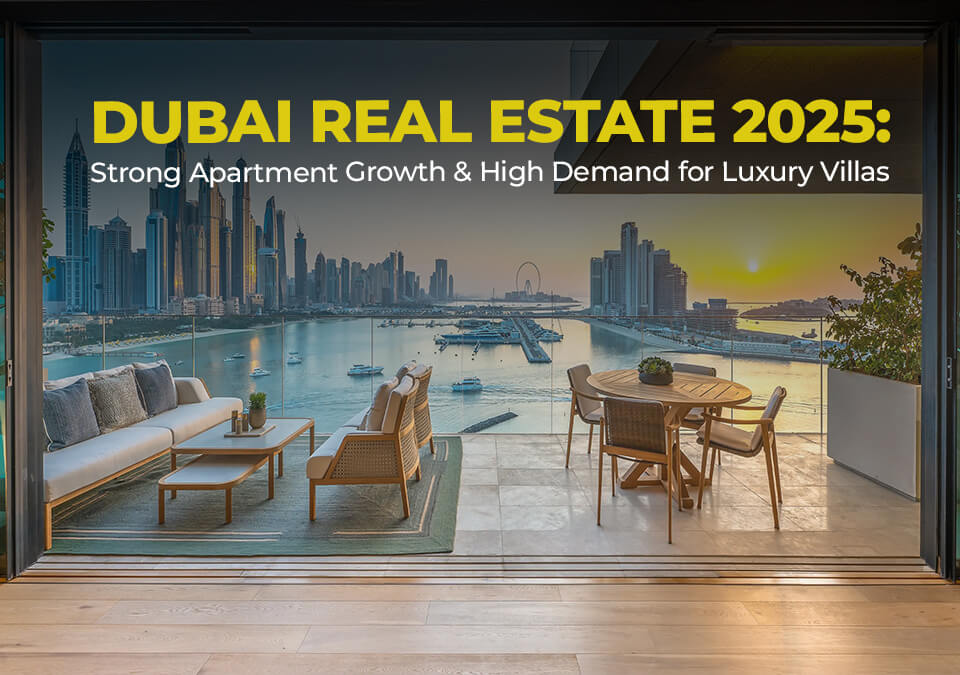
The real estate landscape in Dubai is shifting with a steady rise. According to the latest data from DXB Interact, more than 10,000 new residential units were launched in Q3 2025, with 97% of those being apartments, indicating a swift shift in supply dynamics.
On the other hand, villa and townhouse launches remain balanced, which is maintaining the value and supporting pricing in the low-density segment. For investors, buyers, and first-time homeowners eyeing Dubai’s market, this dual trend presents both opportunity and strategic caution. Let’s analyze what’s happening and what it means for you.
1. Apartment and Villa: The Supply Divergence
In Q3 2025:
- Over 10,000 new residential units launched.
- 97% of those new launches were apartments, reflecting a clear developer focus on high-density product.
- Only a few villas/townhouses were introduced, so the low-density market is tight and supply-constrained.
Implications for you:
- If you’re looking for apartments, whether to live or invest, the market is rich in choice, but competition is intensifying.
- If you’re interested in villas or townhouses, the scarcity works in your favour; value can hold or grow due to limited new supply.
- Developers are shifting into high-density communities with strong accessibility, facilities, and lifestyle appeal. That means amenities and location matter more than ever.
2. Completions Catching Up – But Pipeline Remains Deep

- Approximately 8,500 new units were delivered in Q3, bringing the total completed in 2025 to date to nearly 30,000 units, already matching the volume delivered in all of 2024.
- Another ~10,000 residential units are expected to be completed in Q4 of 2025.
- Looking further ahead, more than 250,000 new homes are projected to be delivered by the end of 2028, positioning Dubai for “dynamic market evolution”.
What this means:
- For end-users (buyers/sellers): ready inventory is good news for choice and flexibility.
- For investors, you must factor in rising competition in the apartment segment and be selective about development and location.
- For first-time buyers, more stock is launching, so timing and positioning (near infrastructure, well-connected areas) will matter.
3. Demand Fundamentals Remain Strong

- Dubai’s population exceeded 4 million in September 2025 and is estimated to hit 5 million by 2030, driven by growth in aviation, tourism, logistics, financial services, and new-economy sectors.
- High-net-worth individuals (HNWIs) continue to relocate to the UAE; 9,800 are expected to move in 2025.
- Dubai ranks highly on the “Dynamic Wealth Index” for attracting private wealth due to its lifestyle appeal, tax environment, and Golden Visa program.
Key takeaways:
- End-user demand (families and professionals relocating) remains a strong driver of the housing market.
- Investor demand (wealth migration, global portfolio diversification) is also firmly present.
- A favourable regulatory environment adds to the appeal.
4. Price Trends: Stability in Apartments, Upside in Villas

- Apartments: Average capital values have remained broadly stable at around AED 1.9 million since early 2022.
- Villas: Stronger momentum is seen here with the average home sale price in Q3 remaining above AED 7 million, up ~24% from the 2024 average of ~AED 5.75 million.
- In the prime segment (homes priced over AED 10 million), villas accounted for 73% of all transactions in Q3.
Interpretation for you:
- For investors seeking capital appreciation, villas in quality locations may offer stronger upside.
- Apartments may offer more stability and lower entry costs, but appreciation may be more subtle.
- First-time buyers: entry via apartments remains sensible; stepping into villas may require a higher budget.
5. Strategic Advice by Buyer Type

For Investors:
- Focus on units with strong rental yield potential and future resale value.
- High-density apartments will have greater supply pressure. So be selective by location and developer.
- Villas remain scarcer; check the master community’s reputation, payment plan flexibility, and the developer’s track record.
For Buyers & First-Time Buyers:
- Pick locations with good connectivity (metro, roads), nearby schools, and amenities, as these aspects drive future value.
- For apartments, consider unit size, community fees, and rental potential (if you plan to rent later).
- For villas: assess infrastructure readiness, lifestyle value, and long-term suitability for families.
For Sellers:
- If you own a villa or townhouse, high demand is your advantage as it highlights the lifestyle, privacy, and unique community features.
- If you own an apartment: emphasise convenience, amenities, rental-demand zones, and long-term occupancy potential.
6. Risks and Things to Monitor
- While demand remains strong, the delivery pipeline is large and is expected to reach over 250,000 homes by 2028. That could bring supply-side pressure.
- Apartment markets may feel more immediate supply pressure; villas less so in the short term.
- Global macro-economic factors and geopolitical shifts may affect investor sentiment, so always plan for scenario flexibility.
- Always verify developer reputation, payment plan terms, handover schedules, and unit quality.
Conclusion
Dubai’s residential market is evolving and offers real opportunities whether you are buying your first home, investing, selling a property, or planning for the future. The apartment segment dominates the recent supply wave; villas are limited and performing well. Demand fundamentals remain strong. Prices are stable in mid-market apartments and rising in quality villa stocks.
If you are ready to make your move in Dubai’s vibrant housing market, start with a clear strategy. Focus on product type (apartment vs villa), location, developer strength, and future demand. For advice on current opportunities, connect with us at Luxliving Real Estate. Visit our website, explore our blog for regular insights, and stay informed about the latest market shifts.
